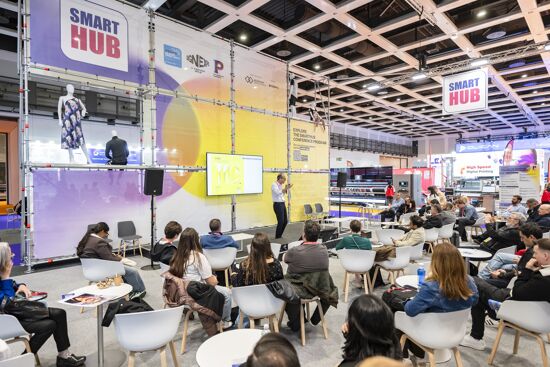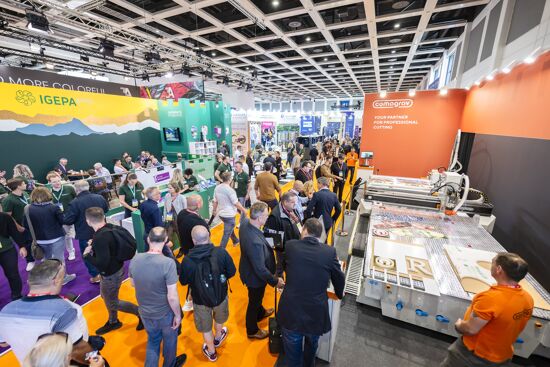Wide format and additive manufacturing
.png?width=750)
Nessan Clearly discusses the numerous ways that 3D printing can be used. The technology was originally used to produce prototypes, including those with different degrees of functionality. But it’s also used to make moulds and tooling and increasingly for producing short run parts.
3D Printer Options
There are many different types of 3D printers, requiring different levels of skill and investment. This includes desktop printers that can be used in any office environment through to industrial plant machinery. There’s plenty of scope within this for wide format print shops, both alongside the existing display business and as a way of diversifying into new markets.
This includes, for example, some opportunities to use 3D printing as part of a visual display. This could be as an advertising model, such as a large model of a drill outside a shop selling tools, or a small model of a wine bottle inside a supermarket to point customers to the wine section of the shop.
.png?lang=en-GB)
Caption: Massivit has developed this Massivit 1800 3D printer for creating objects for marketing displays. ©Nessan Cleary
The most obvious proponent of this type of display is the Israeli company Massivit, which has developed a very large 3D printer, the Massivit 1800, specifically for this type of work.
It’s a big machine, with a printing area of 1.5m x 1.2m x 1.8m, easily big enough to produce large objects, such as life-sized statues. It prints a photo polymer acrylicbased material that solidifies with exposure to UV at room temperature. This is a gel-like material that is squeezed out like toothpaste from a tube to build the object up one layer at a time. The machine can be fitted with two extruders to produce two models side by side.
Once hardened the material is quite brittle but dimensionally stable so that there’s little need to print any supports or in-fill, depending on the shape of the object. The objects are quite light and easy to move around. They are not inherently outdoor resistant but can be coated to add weather resistance.
3D Promotional Items
Wide format print service providers often produce promotional items and this is another area where 3D printing could be applied to produce a complete promotional item rather than just printing a graphic onto an object. This could include anything from beer bottle openers to bookmarks. Mimaki, for example, has cited this application for its first 3D printer, the 3DUJ-P. This uses a form of LED UV-curable ink to create the 3D objects. It prints in six colours – CMYK plus white and clear – so that the objects have the full colour gamut that we would normally associate with a UV printer with over 10 million colours. Mimaki claims that it can reproduce 84 percent of the Fogra 39L colour gamut, which is considerably more than most other 3D printers.
The ink cures layer by layer to form an acrylic resin modelling material. The printer also lays down a dissolvable resin to support the object while it’s being printed, which is also cured by LED UV light. Once the object is printed, the support can be dissolved in a water wash and the UV object peeled away. There’s no need for any further cleaning or polishing. The objects are solid enough that you can insert screws to them without risk of breaking them. It has a build area of 500 x 500 x 300mm.
Other Applications
Probably the most obvious crossover between wide format and 3D printing is for those companies that specialise in CAD work. This is mainly because the type of customers that want engineering designs printed, such as designers and architects, also see the value in having 3D models made. It also helps that the software necessary for producing 3D models has developed out of CAD software and so these printers are used to handling these files.
There’s a developing industrial market for 3D printing as manufacturers turn increasingly to 3D printing to produce moulds and tooling and even some short run parts. This includes relatively small parts that can be done with a desktop printer all the way up to bigger machines that can produce large parts or many small parts together.
Adding & Substracting
Roland sells both a desktop milling machine for subtractive manufacturing, and a 3D printer for additive manufacturing, which are often sold as a complementary pair. The 3D printer is the ARM10, which uses digital light processing or DLP, whereby the object is first split into slices or layers and each layer is then projected onto a vat of photopolymer resin; where the light reacts with the resin, it hardens to form the layer. The base is then lowered and the next layer is projected on top of this until the object is built up one layer at a time. The bed is 70 x 130mm and objects can be 70mm tall. This is complemented by the SRM20 milling machine, which can handle a wide range of materials such as modelling wax, wood, acrylic and ABS.
.png?lang=en-GB)
Caption: Roland has developed this desktop ARM10 3D printer, that's often sold with the similarly-sized SRM20 milling machine.
At the other end of the scale, HP has developed its own Multi Jet Fusion 3D Printers. The process works by laying down a very fine powdered plastic and then jetting two liquid agents to modify that powder through standard thermal printheads. One of these fluids is a coalescing agent that causes the powder to be fused when it's hit by a laser, while the second adds other properties such as colour. Each part is printed one layer at a time and a laser is then used to fuse the plastic powder according to the shape defined by the coalescing agent. The unused powder is brushed away and can be re-used and the next layer is printed. There are several models starting with the 3200, which has a build speed of 3500 cm3/hr and is aimed mainly at prototyping. There’s also a 4200, with a build speed of 4500 cm3/hr, which targets short run production, and the most recent addition, the recently launched 4210 that can handle slightly longer production runs.
There’s no question that manufacturers are increasingly turning to 3D printing, both for developing new products and for producing short run parts and tooling. But there is a shortage of 3D print service bureaux that are able to handle the CAD-like files used for 3D printing. So 3D printing should represent a good opportunity for wide format service providers, albeit that this market is still developing.
Source information: The Wild Format guides are intended to expand awareness and understanding of the craziness that can be created on wide format digital printing devices, from floors to lampshades and everything in between. These guides are made possible by Digital Dots with generous support from EFI, HP, Mimaki and Roland
Topics
Interested in joining our community?
Enquire today about joining your local FESPA Association or FESPA Direct
Recent news

Industry Experts Explore the Evolution of Smart Manufacturing in the Textile Industry
A FESPA SmartHUB roundtable at Personalisation Experience 2025 discussed smart manufacturing's transformative impact on the textile industry. Experts highlighted the shift to on-demand customisation, driven by digital printing, data analytics, and automation. Key takeaways included enhanced machine control, significant waste reduction through intelligent software and colour management, and improved sustainability via energy efficiency and near-shoring, ensuring agility and environmental responsibility in textile production.

FESPA 2025 gathers leading visionaries from across the speciality print industry in Berlin
FESPA Global Print Expo 2025, European Sign Expo and Personalisation Experience (6 – 9 May 2025, Messe Berlin, Germany) welcomed Visionaries from across the speciality print industry to shape the future of print, develop forward-thinking business strategies, and explore innovative ways to translate emerging industry trends into tangible growth opportunities.

Exploring Cutting-Edge Textile Printing Innovation with Adobe Print Engine 7
Adobe PDF Print Engine 7, launched at FESPA Global Print 2025, significantly advances textile printing. Debbie McKeegan shares how it automates non-white substrate management and RGB colour handling, expands colour gamuts with in-RIP multicolour transparency blending, and streamlines workflows for efficiency and sustainability. This update boosts customisation, reduces waste, and positions businesses at the forefront of digital print innovation.

FESPA Global Print Expo 2025 - Overall Highlights
FESPA Global Print Expo, Europe's leading print and signage exhibition returned to Messe Berlin from 6 - 9 May 2025.